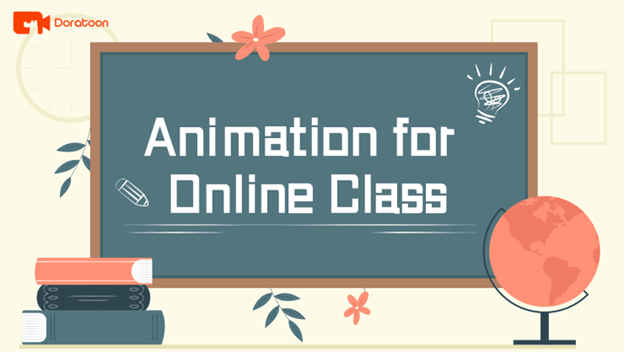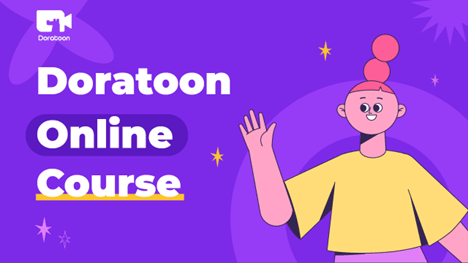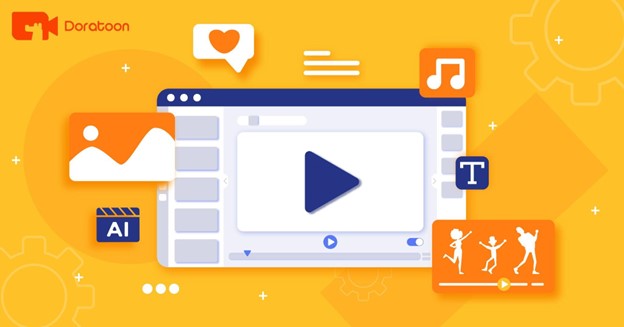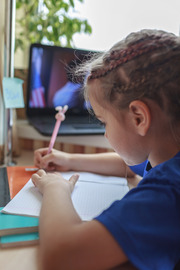Reducing Harm When Teaching Computers to Children
More and more children are using smartphones, tablets and laptops for playing games, reading, watching cartoons and learning. It’s difficult to separate everyday life from computer use. Parents themselves determine how often children will use technology and what exactly they will do.
From researching articles to exploring news in the media, taking an online class, connecting on social media, or passing the time playing a game, it will always be a challenge to manage what a child does online. So, it only make sense to properly teach a child how to effectively and safely us a computer, tablet or smart phone.
The computer does not harm itself: content and time of use are important
Much as been written about the dangers of computers. Constant use of a computer by children can lead to vision problems, poor posture and diseases of the back and neck, dermatitis and breathing problems. Experts also point to how technology can harm a child’s psyche. Most likely, they mean the impact of computer games and dangerous content on the behavior of children and adolescents.
The Department of Education in Northern Ireland names roughly the same risks: postural problems, photosensitive epilepsy, uncontrolled consumption of content. WHO pays the most attention to the fact that children spend time at computers instead of moving more and playing outdoors.
Vision
Doctors have long believed that screen flicker aggravates nearsightedness, and have recommended working at a computer only with a protective screen. But studies conducted over 20 years have shown that the computer does not harm vision, although it can cause computer vision syndrome (CVS), which includes eye fatigue and headaches. Permanent impairment to vision due to Myopia is affected by heredity and lack of ultraviolet radiation. Therefore, it is more important for a child to walk in the fresh air in order to maintain vision.
Problems with the muscles of the back and neck
The researchers interviewed more than 400 children in New York schools and found that the back and neck are more likely to hurt those who sit at the computer more. The study was small, but the same data is given in the Hopkins University guide. The compilers warn that those who sit at the computer for a long time develop not only back and neck problems, but also injuries from repetitive deformities, such as carpal tunnel syndrome. To avoid these risks, children should take breaks every half an hour and study in comfortable chairs.
Impact of dangerous content
Psychologists often say that children who play violent computer games or watch violent videos are more aggressive than others. Scientists at Dartmouth College conducted a meta-analysis of such studies and saw that children who play violent computer games are more likely to fight in school and on the street, damage property, such as school furniture. But the research doesn’t tell us what’s causing and what’s the effect — it’s possible that initially more aggressive kids are more likely to play violent computer games.
It seems that the more children stay at home, the more they are exposed to dangerous content. In a 2011 study, scientists saw that children rarely use the Internet in an unsafe way, that is, they rarely go to sites with dangerous content and rarely leave their data on sites, download harmful programs from them. At the same time, in 2020, Unicef reported that due to the lockdown and the transition to distance learning, the risks of dangerous content for children have increased, and they need to be protected.
Little mobility
The more children spend on computers and smartphones, the less they move. This is reported by the American Association of Pediatricians and Psychiatrists and considers it one of the main risks for the development of children. From swaddle wrap parents set out to protect their children. They grow quickly and it’s not long before they are using computers or tablets. Movement is important for development, for example, WHO considers time spent at the computer as harmful as time spent in a stroller or crib for children under four years of age. In addition, it is the movement in the fresh air that reduces the risks associated with eye diseases.
Game addiction
By gambling addiction, you need to understand that the child not only spends a lot of time playing games, but does not see the benefit and pleasure in other activities. It just doesn’t matter how much time you play. A longitudinal study of 11,000 British schoolchildren concluded that there was no difference in behavior between children playing for one hour and three hours.
But if teenagers sit at games longer, then this affects health first of all. Indian University research says that most teenagers who play computer games have high heart rate and blood pressure due to too much anxiety and stress.
The computer helps in learning, socialization and self-control
Emotional well-being
Researchers at Oxford University found that children who play computer games for one to three hours a day have fewer emotional problems and are more satisfied with life than those who do not play the computer and than those who play it constantly. Apparently, they are able to show some of the negative emotions in the game and get rid of them. At the same time, those who play a lot, apparently, are more tired and do not feel so good.
Self control
In the same study, it turned out that children who play from one to three hours a day experience fewer problems with self-control and less prone to becoming addicted to their mobile phone. They are also less likely to have problems with hyperactivity.
Help learning
A study by the British National Literacy Foundation found that children between the ages of three and five enjoy e-books more than regular ones. Apparently, this is due to the fact that it is easier for children to interact with e-books.
Cognitive psychologist Heather Kirkorian confirms these data and says that there is nothing harmful for children in the very use of computers and e-books. If children play educational games, learn letters and numbers, it only benefits them.
True, there is a feeling that this only works for preschoolers and younger students. Researchers debate whether there is a difference in academic performance between those who use computers and play games and those who do not. In 2013, economists Farley and Robinson did not find this difference, but in a survey study, specialists from the University of California found it.
Social ties are bigger and stronger
According to the same study by Farley and Robinson, having access to computers helps kids build social connections, and not just online. They had more social connections, not only virtual, but also real. Still, parents struggle with how early they should allow their kids to use social media.
According to preliminary results, children who accidentally received a free computer regularly interacted with more friends than students without computers. They also spent more time interacting with these friends in person. And there was no tangible difference in cyberbullying experience.
Researchers who have studied preschoolers who use and do not use computers have come up with similar results. The former showed more social skills and fewer behavior problems.
Helps develop critical thinking
Researchers from Redbud University have shown that role-playing and strategy games help develop critical thinking and develop reflection. That is, the child learns to ask the right questions, to separate the important from the unimportant – and shooters and other action games do not affect these skills in any way. But, of course, games cannot be the only source of development of critical thinking.












